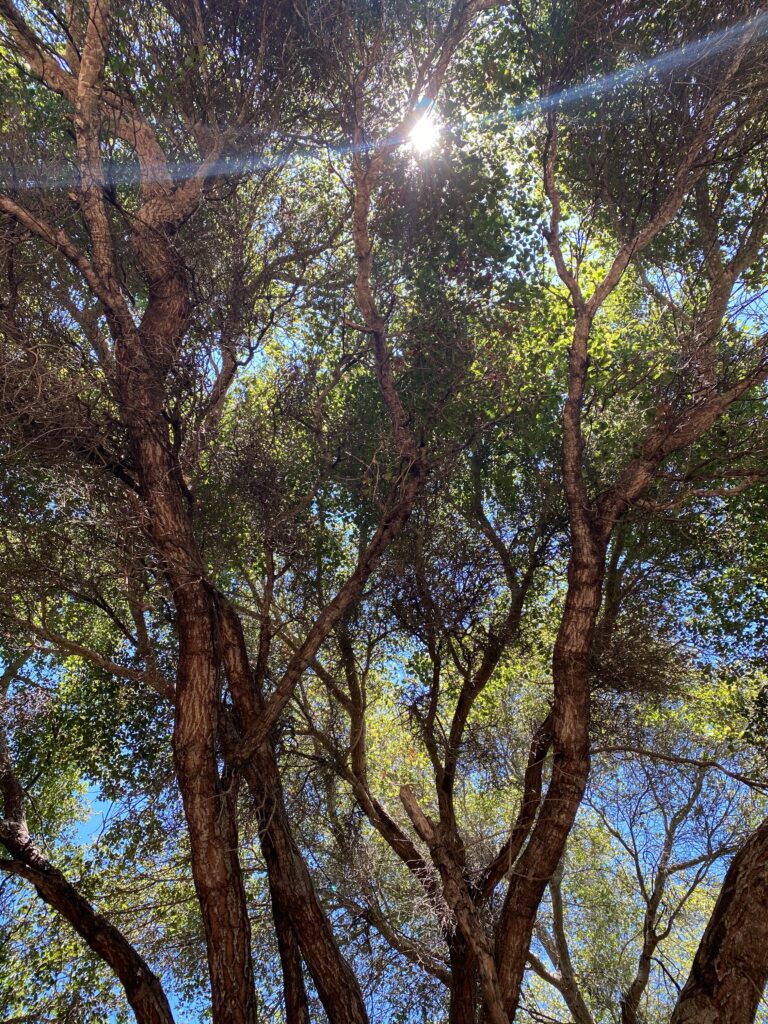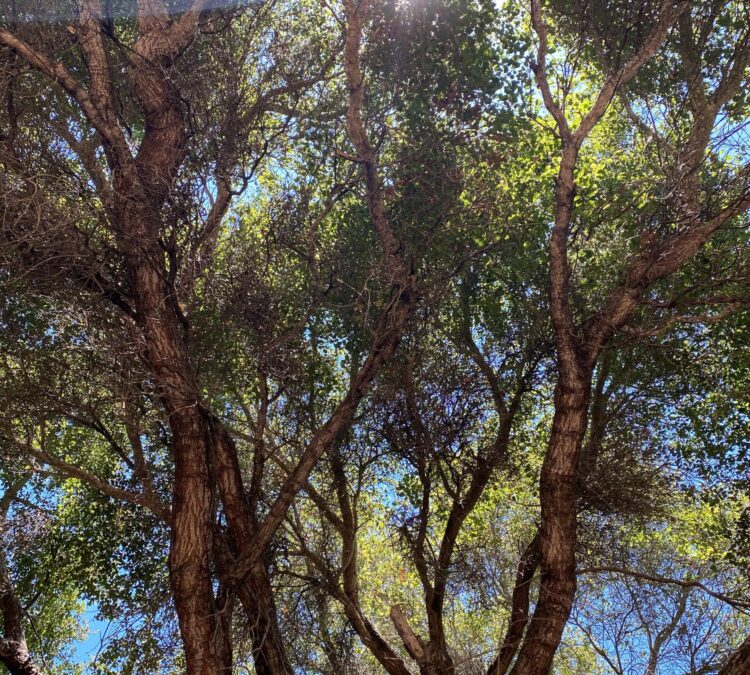Biophilia, or the love of life and living things, is a term popularized by Harvard naturalist Dr. Edward O. Wilson in his 1993 book, The Biophilia Hypothesis. His theory describes humanity’s desire to commune with nature as an innate and genetically determined
affinity for the natural world.

Spending time outdoors can lower our heart rates, slow our breathing, and reduce anxiety and depression. In a study at the University of Glasgow in Scotland, epidemiologist Richard Mitchell found lower mortality rates and fewer stress hormones circulating in the blood of people living near parks or other green space, even if they didn’t use the park to exercise. Living close to green space impacted lowest income people most, equalizing their health with those of higher income. Mitchell suspects that this restorative effect is due to nature’s ability to lower our stress.
These proven benefits have led some countries to make “greening” cities and biophilic design part of their public health policy, tackling climate change and social justice at once. In addition to improving physical and mental health, biophilic cities increase biodiversity, sequester carbon, and mitigate the urban “heat island effect” that has been found to impact lower income households most dramatically.
Singapore has been a leader in sustainability, using biophilic design to create a “City in a Garden.” Prime Minister Lee Kuan Yew has had an unwavering vision to “green and clean” Singapore since 1965. With the third-highest population density worldwide, the island has developed an abundance of vertical, high-rise living space covered in 300 acres of sky-rise greenery.
In 1991, Singapore began converting underused linear space into walking/biking paths called the Park Connector Network (PCN). More than 200 miles of PCN connects acres of parkland and brings nature to people’s doorsteps. Singapore is naturalizing its parks and water bodies to increase biodiversity and to build resilience to sea level rise. One million trees are expected to be added to parks, city streets, PCNs, and nature preserves over the next 10 years. Because green building has been mandatory since 2008, skyscrapers operate as sustainable ecosystems immersing their occupants in nature. Supporting the health of people and the planet has also boosted the economy. Prime Minister Lee says, “Greening is the most cost-effective project I have ever launched.”
For the past 46 years, the Kingdom of Bhutan has been measuring progress not through its GDP, but through “Gross National Happiness” (GNH). GNH is fostered through social development, environmental sustainability, and cultural preservation. At the heart of the Eastern Himalayas, Bhutan is one of the world’s 10-most biodiverse regions. While sinking carbon, Bhutan’s five million acres of preserved land supports endangered species that roam free along biological corridors.
Bhutan relies heavily on hydro-electric power from its many fast-flowing rivers and even sells the power to neighboring countries, making it one of the world’s only carbon-negative countries. Education and healthcare are free to the citizens of Bhutan and the government supports rural farmers with free electricity. Despite their best efforts, Bhutan faces disproportionate challenges from climate change. A conservation effort, “Bhutan for Life,” has been created (funded in large part by the World Wildlife Fund) to support Bhutan in protecting its biodiversity, and carbon-sinking land indefinitely, allowing Bhutan to stay committed to land stewardship and their GNH.
With rapid urbanization, the people of South Korea suffer from digital addiction, intense academic pressures, and the stress of long work hours. This has led to a sharp decline in birth rate and marriage, leading to a dramatic rise in one-person households, 90 percent of which report feelings of loneliness. Countless studies proving the healing benefits of nature have led to the creation of the Forest Welfare Program. The country now has 37 state-run recreational forests offering many programs for public health.
Divided into seven distinct life stages to support humans from birth to death, they include forest kindergarten, an addiction treatment center, teen digital detox programs, the “green-gym,” meditation groups, and forest therapy for PTSD, to name a few. Chungbuk University offers a “Forest Healing” degree for a variety of careers in the field. Inspired by the lush forest that runs the length of the country, South Korea is maximizing the healing effects of nature across their entire society.
A study at the University of Calgary in August 2021 found that the global prevalence of depressive and anxiety symptoms has doubled since the start of the pandemic. Between 2001-2017, the U.S. lost 24 million acres of natural land, largely due to housing, agriculture, and energy development. This heightened pace of urbanization is undermining our planet and our own health.
Much of Los Angeles is suffering from an intense heat-island effect that impacts poorer communities and people of color disproportionately. Heat is a big killer, accounting for more deaths each year in the United States than storms, floods, and lightning combined. By rewilding our cities using biophilic design, we can reintroduce native plants, build parks on empty lots, and allow nature to reclaim space. Making urban spaces green would support our unique biodiversity, cool neighborhood communities, and bring us the healing benefits of connecting with nature.













